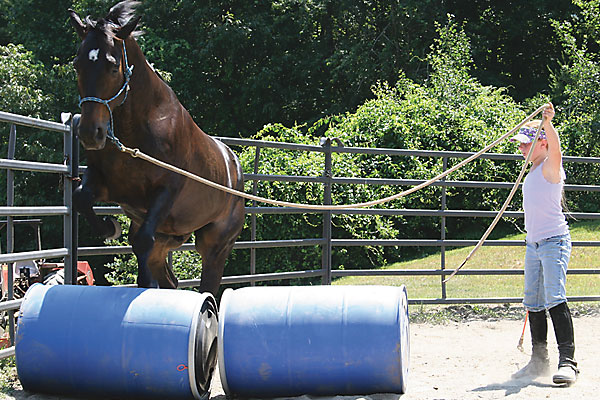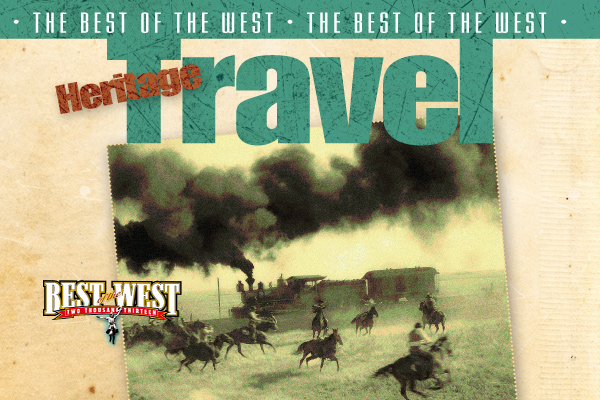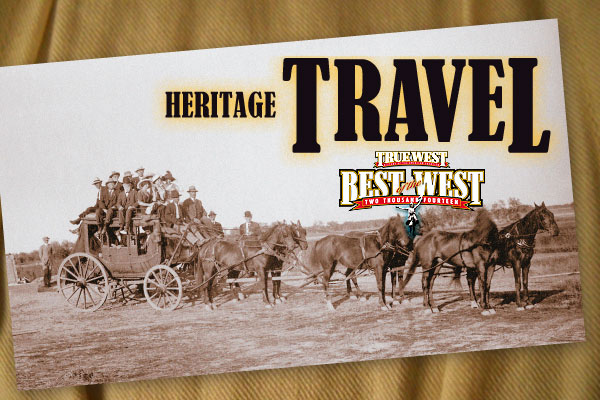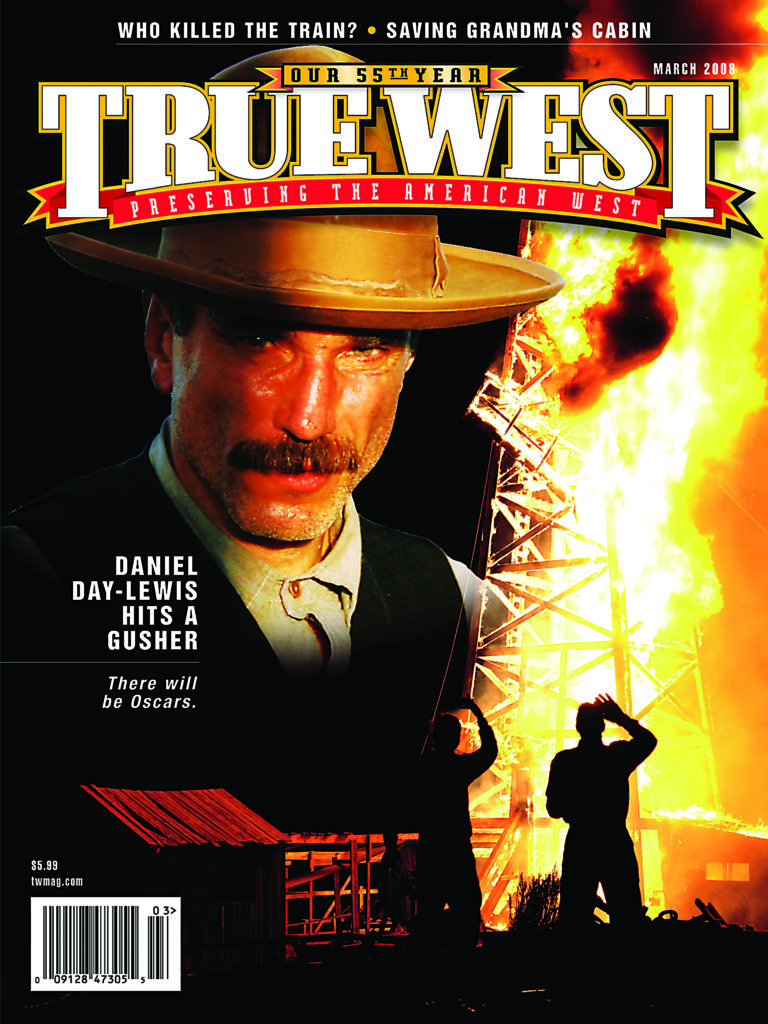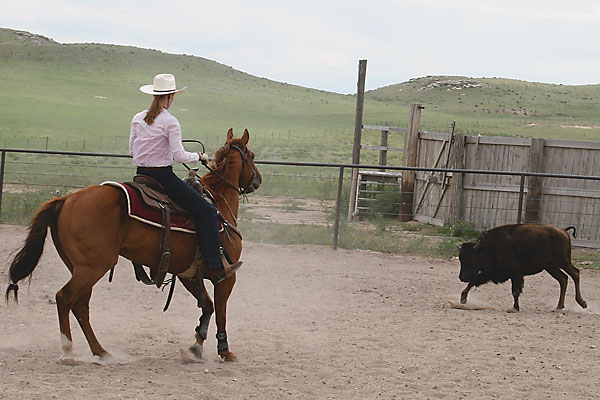
If you’ve ever gripped your seat on a roller coaster, then you have an inkling of what it feels like to ride a cutting horse.
My first time riding a cutting horse, I held onto the horn of my saddle for dear life as Leana with Style, an eight-year-old championship cutter, threw me around the arena while she chased a black cow. After all, Leana with Style was trained to go after that cow. I just tried to stay on her back.
I was participating in Dream Week at the Colorado Cattle Company in New Raymer, a week of intense clinics where participants can live out their cowboy dreams. People from all over the world had gathered at this working ranch to be schooled by cutting horse trainers Tena and Eddie Johnson and critiqued by cutting horse champion and judge Teddy Johnson. We would all have the chance to ride a superb, award-winning cutting horse by the end of the week.
Coming into the clinic, I was at a bit of a disadvantage because we were filming only part of the Dream Week for our Equitrekking Colorado show. That meant I entered a little late into the lessons and got thrown into the mix. It turned out to be one of the most exciting rides I have ever taken.
Cutting horses are usually Quarter Horses, but they can be other breeds. They are utilized to separate a calf away from the herd. To do this, cutting horses have to be quick, agile and intelligent. Riders must have good balance to stay in the saddle on these high performance horses.
Cowboys originally trained cutting horses on ranches. They had to coax each calf away from the herd in order to vaccinate it, and castrate it, or for other reasons.
“Over a period of time, they found that after doing so many of these, these horses would actually get to reacting on their own, so they got to breeding and crossing these horses that had that natural ability,” cutting horse expert Teddy Johnson says. “You get horses with a lot of cow, a lot of style. Sometimes they’ll get so intent, they nearly want to lay down in front of that cow.”
Riding a cutting horse and actually working to separate out a cow is tricky. In my lessons, I was told to watch the head of the cow, drop my hand and use my legs more to direct the horse. Many of these horses are so well trained that the cow begins to dictate where the horse goes. When I dropped my hand and gave the horse my reins, it was almost as if I had said “sic ’em.” And she did.
Leana with Style moved in ways that I had never felt a horse move before, lunging from side to side, hurtling forward. I was like a rag doll, but I did stay on. Watching the more experienced riders cut was like watching a tango. The riders could read the horse’s next move and had learned to move as if at one with the horse.
Cutting competitions are events in which the horse and rider must separate a cow from the herd and keep it separated for a certain amount of time. It’s a lot harder than it sounds. Those who want to move into the cutting world need a versatile horse with an aptitude for this type of work. They also need patience because, like any equestrian discipline, the horse and rider undergo a lot of training.
Trainer Eddie Johnson offers some advice for riders who are looking at cutting more seriously: “Find the most reputable cutting horse pro in your area to ask about shows, training, lessons, etc. Above all, buy the best horse you can afford. Pre-purchase exams are essential. Your trainer should be able to help you determine the right horse for your ability and budget. Be willing to work hard and most of all, have fun.”
The sport of cutting allows us to trace back to our pioneer roots, back to a time when ranch hands performed the necessary tasks of the day by separating individual cattle from the herd.
Get your cowhorse ducking and diving, and hold onto that cow. The exhilaration you’ll feel will perk you up better than any rollercoaster drop.
Darley Newman is the host of the Public Television series Equitrekking®, which takes viewers on horseback riding vacations around the world. Visit equitrekking.com for more.
If you want to explore the world of cutting with your horse (or need a suitable mount to borrow) or you just want to explore riding these amazing horses, I recommend these resources:
National Cutting Horse Assn.
817-244-6188 • nchacutting.com
American Quarter Horse Assn.


